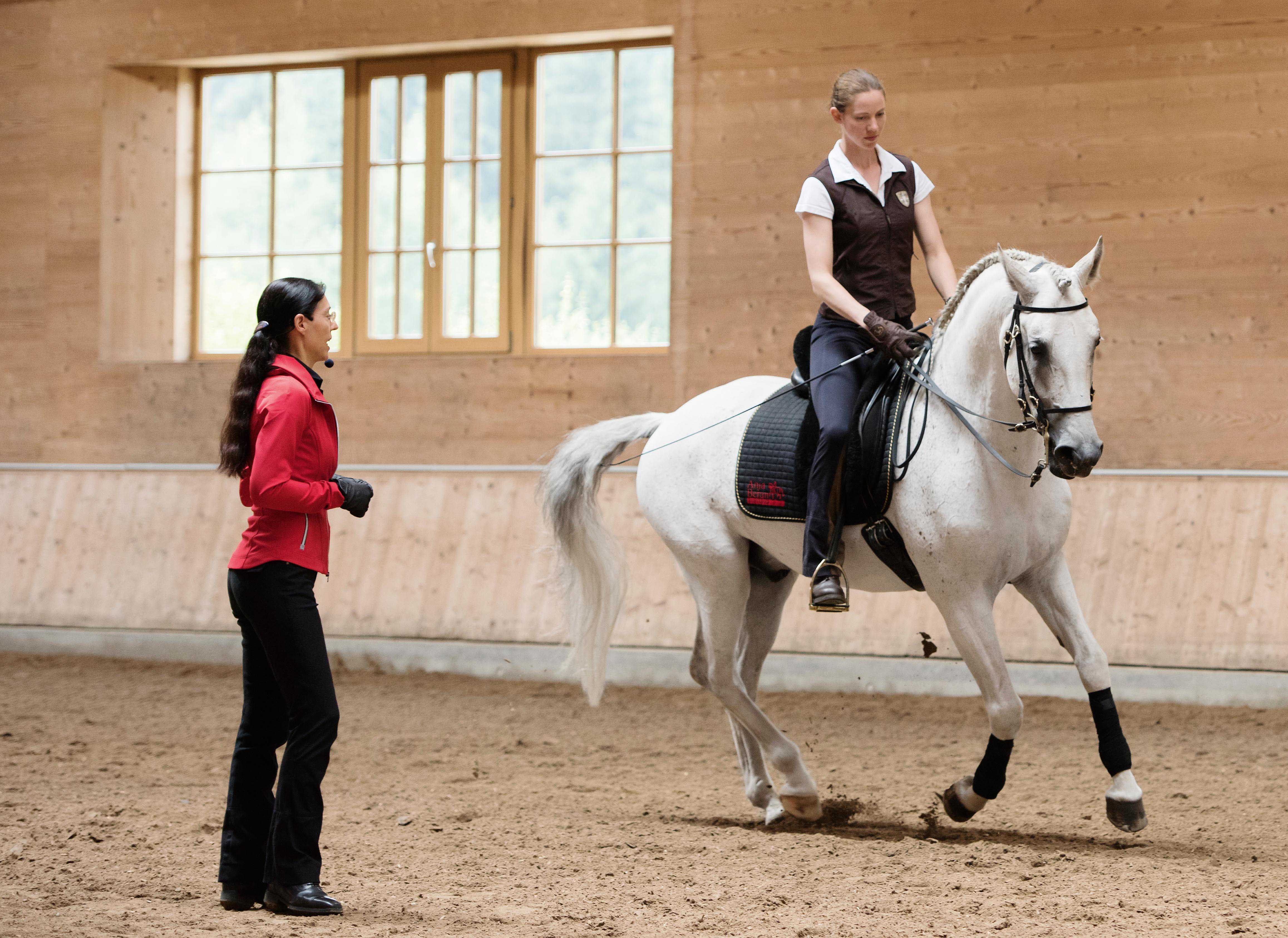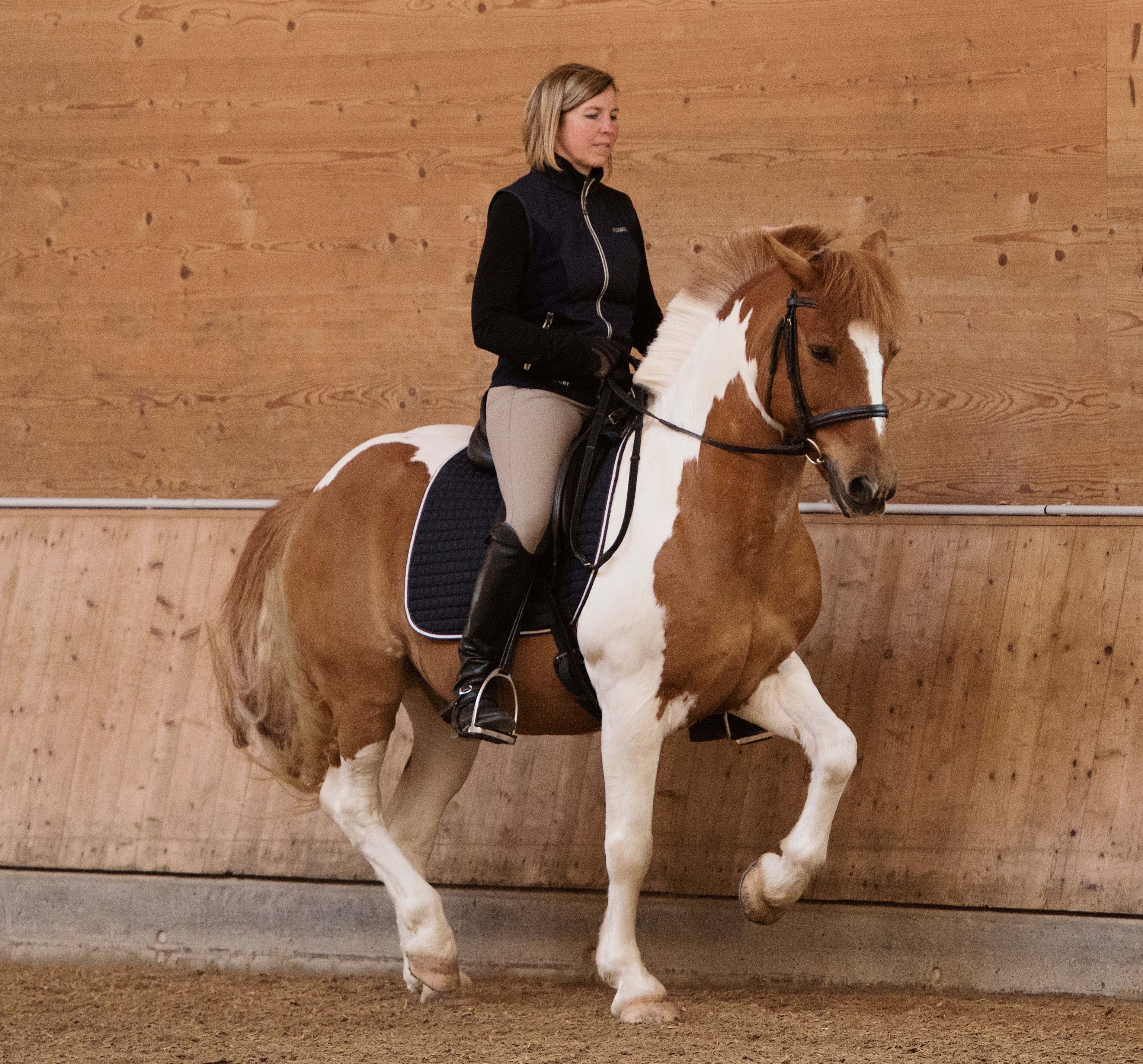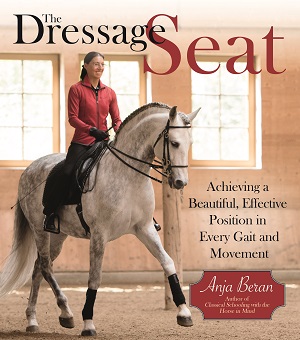Are you usually out of breath after sitting the trot? Do you catch yourself holding your breath over jumps? In her book The Dressage Seat, renowned classical riding expert Anja Beran says the importance of good breathing in good riding is often ignored. But in her own practice, she spends concentrated time nurturing proper breathing technique, and she encourages it in all her students, as well.
***
Time and again, I see riders’ faces change color as they ride. They take on a stone-face look because their breathing is flat and irregular. This can have various causes, such as fear or simply concentrating too hard.
Not breathing well puts your body under stress, making it difficult to sit relaxed and focused in the saddle and to react with flexibility. Deep and quiet breathing is very important during physical activity because the body needs oxygen for energy. The muscles need oxygen to be able to work optimally.
Consequently, it is important that the instructor and the rider herself often check whether she is breathing freely. When there are consistent issues, it is generally beyond the role of the riding instructor to improve the problem—the student should be encouraged to work on her breathing on her own. It is important also to practice correct breathing out of the saddle. When I see that someone has difficulties breathing free and deep, I recommend they seek a breathing therapist, because a relaxed seat is never possible with restricted breathing.
Many riders tend to breathe fast and short with harder work, such as cantering. Breathing flat means the air is merely pushed in and out of the upper part of the respiratory tract without getting down to the lower respiratory tract and to the lungs, where the gas exchange takes place. Consequently, there is not enough supply of oxygen.

Photo by Maresa Mader
In our barn, we have a former opera singer who teaches us riders many exercises so we can breathe quietly and deeply all the time, even in stressful situations. I first learned about the importance of breathing through painstaking work with the classical singer Gerda Prochaska-Stolze. She is a classical singer and mezzo soprano from the conservatory in Vienna who was engaged for a long time at the Volks Opera of Vienna.
Breathing is something that should function without us thinking about it. It happens—like the tendency of humans to do everything with the hands—unconsciously. However, we need to be conscious of how we are breathing, because in a crisis, we frequently fail to breathe. When I noticed that some riders were dizzy after initial breathing exercises with Gerda Prochaska-Stolze, it was clear to me that we apparently don’t exhaust the possibilities of our breathing and that there is much to improve.

Photo by Maresa Mader
In my own case, I have found that good breathing technique improves my ability to talk loudly for hours, like I have to when giving riding lessons. It is easier on my voice, the sound is more pleasant for listeners, and I can maintain a louder volume without straining. The diaphragm works correctly with good breathing training. This elastic muscle pulls on the last ribs toward the upper abdomen when breathing in. This is an important training concept that is always integrated into deep breathing. Singers and actors can hold a note even with tremolo, and can fill a large hall with their voice without technical assistance when breathing from the diaphragm.
It is ideal for deep breathing to become automatic so that you do it all day long, as well as when you are riding. It can help you a lot on the horse, especially when you are on a very tense horse. It also helps to breathe deeply with regularity to signal to the horse that all is in order and there is no need to be upset. This calmness also translates to the seat.

Photo by Maresa Mader
Gerda Prochaska-Stolze says: “Singers and actors practice deep breathing for years. It provides the elixir of life—oxygen—to the body and the mind, and is important for circulation to the brain. Deep breathing relaxes you in stressful situations and gives you the chance to react appropriately. This can be extremely helpful on a horse and can be a major contribution to the safety of horse and rider. To learn deep breathing you need a trainer to work with you at least once a week. It isn’t learned in a short amount of time, but takes about half a year of instruction before you can finally practice it independently. Deep breathing opens a new way to release and relax when riding and can be varied from lesson to lesson. With well-trained breathing, your body and mind are fit and receptive.
“Also, when you are stressed from your day at the office as you come to the barn, you can relax yourself with breathing exercises. Even five minutes of controlled breathing outside, assuming the air isn’t too cold, can help diminish stress and worries. In this way, you can approach your horse free and relaxed, and nothing stands in the way of enjoying the ride together.”
***
This excerpt from The Dressage Seat by Anja Beran is reprinted with permission from Trafalgar Square Books.


 October 18, 2017
October 18, 2017 

























